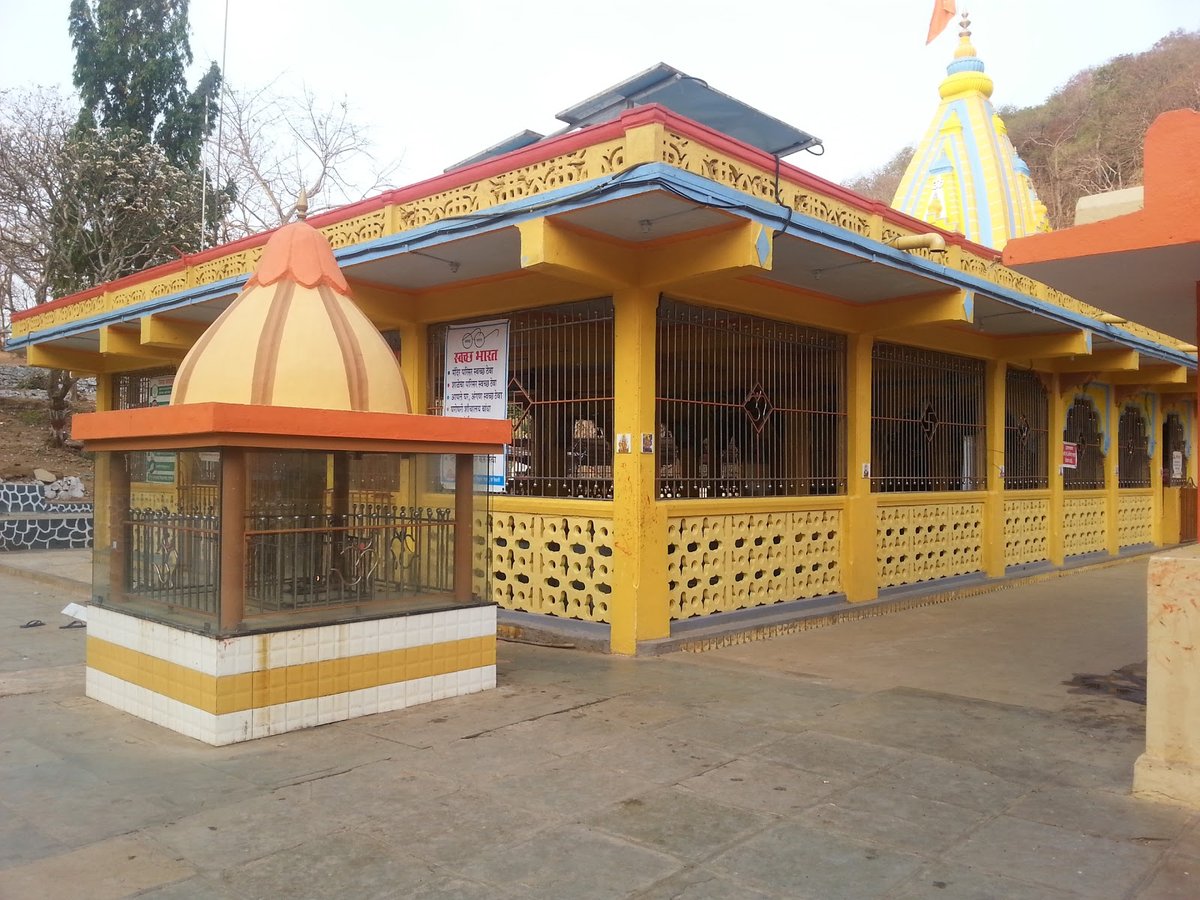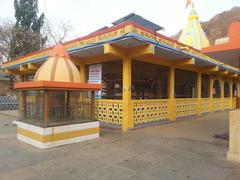
Visiting Tungareshwar Temple: Hours, Tickets, and Tips
Date: 18/07/2024
Introduction
Nestled within the lush greenery of the Tungareshwar Wildlife Sanctuary in Vasai, the Tungareshwar Temple stands as a beacon of spirituality and history. This temple, dedicated to Lord Shiva, is not just a place of worship but a testament to the rich cultural heritage of the region. The origins of Tungareshwar Temple remain enigmatic, with some accounts suggesting its existence dating back over a thousand years to the Shilahara dynasty (Shilahara dynasty). Legends intertwine with historical narratives, attributing the temple’s foundation to the Pandava brothers from the epic Mahabharata and the divine intervention of Lord Shiva himself in a battle against the demon Tunga. Rediscovered and revived by the revered saint Bhagwan Gadge Maharaj in the 18th century, the temple has since evolved architecturally, blending various styles like Hemadpanthi and Maratha. Today, it attracts numerous devotees and tourists alike, drawn by its serene ambiance and captivating history.
Discover the History and Legends of Tungareshwar Temple - A Hidden Gem in Vasai
Origins Lost to Time
The exact origins of the Tungareshwar Temple remain shrouded in mystery. Some accounts suggest that the temple has existed for over a thousand years, potentially dating back to the Shilahara dynasty (Shilahara dynasty). The Shilaharas, known for their patronage of art and architecture, ruled the Konkan region (where the temple is located) between the 8th and 12th centuries. Their reign saw the construction of numerous temples dedicated to Shiva, making it plausible that the Tungareshwar Temple could be one of their creations.
Legends of the Pandavas
Local legends weave a fascinating narrative, linking the temple’s origins to the epic Mahabharata. According to these tales, the Pandava brothers, during their exile, sought refuge in the dense forests of Tungareshwar. Feeling the need for a place of worship, they installed a Shiva linga at the site where the temple stands today. This legend resonates with the strong belief in the region that the Pandavas traversed these lands during their exile.
The Tale of Tungareshwar and the Demon
Another captivating legend revolves around Lord Shiva and a powerful demon named Tunga. As the story goes, Tunga terrorized the region, causing immense suffering to the inhabitants. Unable to bear their plight, the gods pleaded with Lord Shiva for help. Accepting their request, Shiva descended to Earth and engaged in a fierce battle with Tunga. The clash was monumental, shaking the very foundations of the earth. Finally, Shiva emerged victorious, vanquishing the demon and restoring peace to the land. It is believed that after the battle, Shiva, exhausted from the fight, rested on a rock at the site of the present-day temple. This rock, bearing the impression of Shiva’s reclining form, is still revered by devotees and is located within the temple complex. The temple derives its name, Tungareshwar, from this legend, signifying “Lord of Tunga” (the demon).
Architectural Evolution
The Tungareshwar Temple, as it stands today, is not solely the product of a single era. While its core structure might be ancient, the temple has undergone several renovations and expansions over the centuries. The influence of various architectural styles, including Hemadpanthi and Maratha, is evident in its structure.
Rediscovery and Revival
Despite its legendary past, the Tungareshwar Temple was lost to the outside world for a period. Overgrown by the dense forest, it lay hidden until its rediscovery by a revered saint, Bhagwan Gadge Maharaj, in the 18th century. Recognizing its sanctity, Gadge Maharaj undertook the task of restoring the temple, bringing it back to its former glory.
A Place of Pilgrimage and Tranquility
Today, the Tungareshwar Temple stands as a testament to its enduring legacy. It remains a significant pilgrimage site, attracting devotees seeking blessings and solace. The temple’s serene ambiance, amplified by its location within a wildlife sanctuary, offers a unique blend of spirituality and natural beauty.
Visitor Information
- Visiting Hours: The temple is open from 6 AM to 6 PM daily.
- Tickets: No entry fee is required to visit the temple.
- Best Time to Visit: Early mornings or late afternoons to avoid the midday heat.
- Travel Tips: Wear comfortable footwear as the terrain can be uneven. Carry water and some snacks as there are limited facilities nearby.
Nearby Attractions
- Tungareshwar Waterfall: A beautiful waterfall located within the sanctuary, perfect for a refreshing break.
- Vajreshwari Temple: Another historic temple located a short drive away.
- Chinchoti Waterfall: A popular picnic spot near Vasai.
Accessibility
The temple is accessible by road from Vasai. Public transport options are limited, so hiring a taxi or driving yourself is recommended.
Special Events
The temple hosts special events during major Hindu festivals such as Maha Shivaratri and Shravan Mondays. These events draw large crowds and are a vibrant time to visit.
Photographic Spots
- The rock bearing the impression of Shiva’s reclining form.
- The lush green surroundings of the temple.
- The nearby waterfall for nature photography.
FAQ
-
Q: What are the Tungareshwar Temple visiting hours?
- A: The temple is open from 6 AM to 6 PM daily.
-
Q: Is there an entry fee for Tungareshwar Temple?
- A: No, there is no entry fee to visit the temple.
-
Q: What are some nearby attractions?
- A: Nearby attractions include Tungareshwar Waterfall, Vajreshwari Temple, and Chinchoti Waterfall.
Stay Updated
For more information on visiting the Tungareshwar Temple and other historical sites in Vasai, download the mobile app Audiala and follow us on social media for the latest updates and travel tips.
Conclusion
The Tungareshwar Temple, with its profound historical roots and captivating legends, offers a unique blend of spirituality and natural beauty. From its mysterious origins and association with the Pandavas to the dramatic tale of Lord Shiva’s battle with the demon Tunga, the temple is steeped in rich narratives that continue to inspire awe and reverence. Architecturally, it stands as a testament to the region’s diverse cultural influences, showcasing elements from different eras and styles. The temple’s rediscovery and restoration by Bhagwan Gadge Maharaj in the 18th century reintroduced it to the world, allowing it to reclaim its place as a significant pilgrimage site. Today, Tungareshwar Temple remains a sanctuary of tranquility and devotion, nestled within the verdant embrace of the Tungareshwar Wildlife Sanctuary. Whether visiting for spiritual solace or to explore its historical and architectural marvels, the temple promises a memorable and enriching experience. For those planning a visit, the serene environment, coupled with nearby attractions like the Tungareshwar Waterfall and Vajreshwari Temple, makes it a must-visit destination in Vasai. Stay connected and up-to-date with the latest information and travel tips through our mobile app Audiala and our social media channels.
References
- Discover the History and Legends of Tungareshwar Temple - A Hidden Gem in Vasai, 2024, Shilahara dynasty
- Visiting Tungareshwar Temple - History, Architecture, and Visitor Information, 2024, Shilahara dynasty
- Visiting Tungareshwar Temple - Festivals, Timings, and Essential Visitor Guidelines in Mumbai, 2024, Shilahara dynasty

